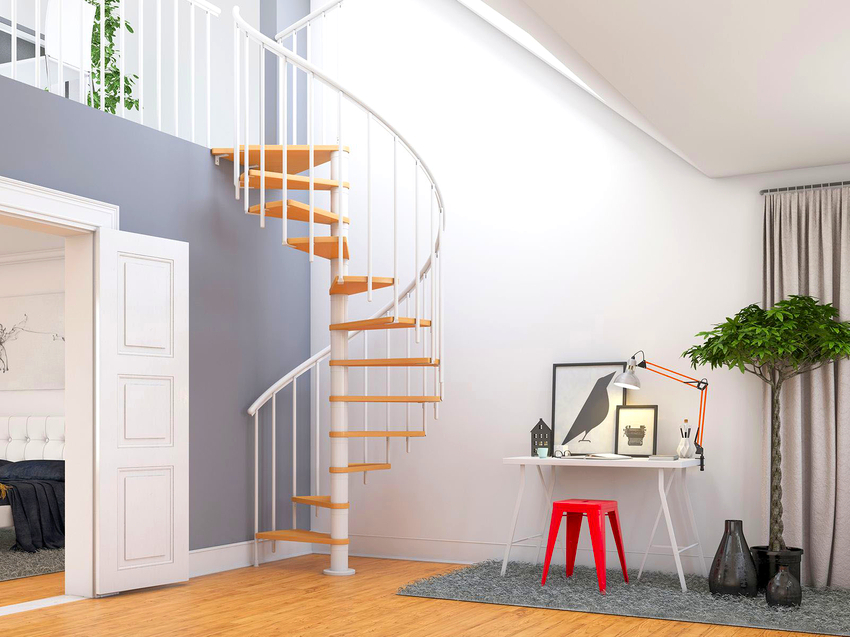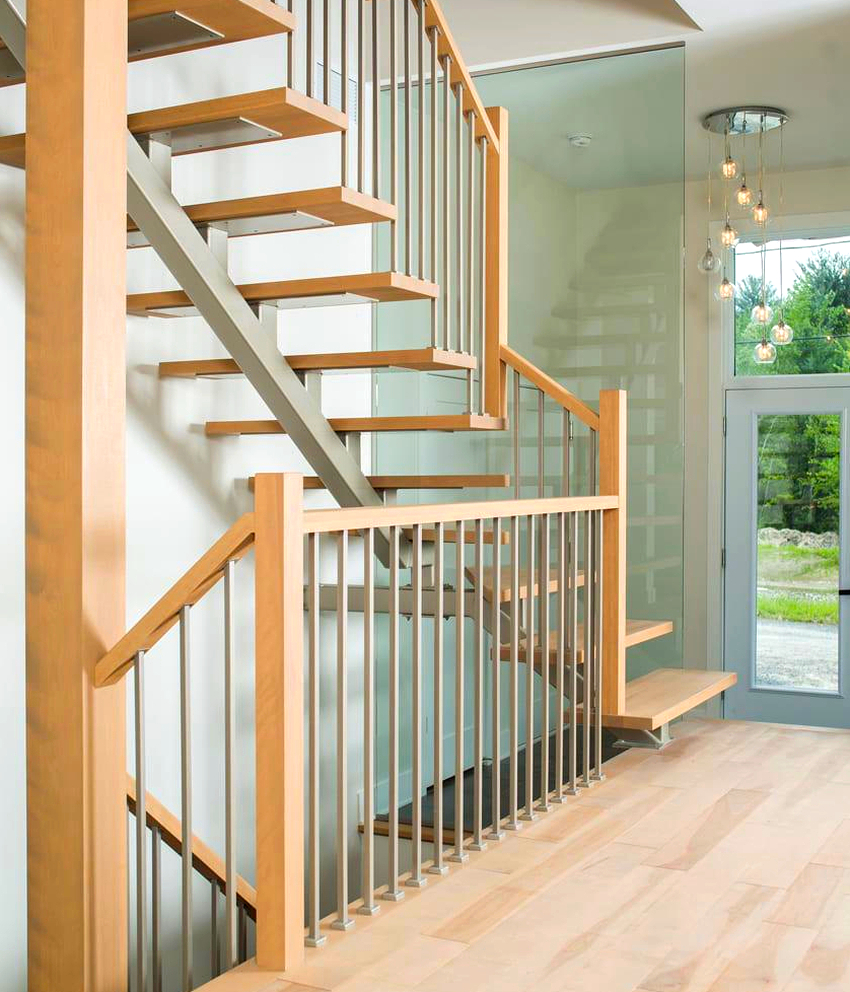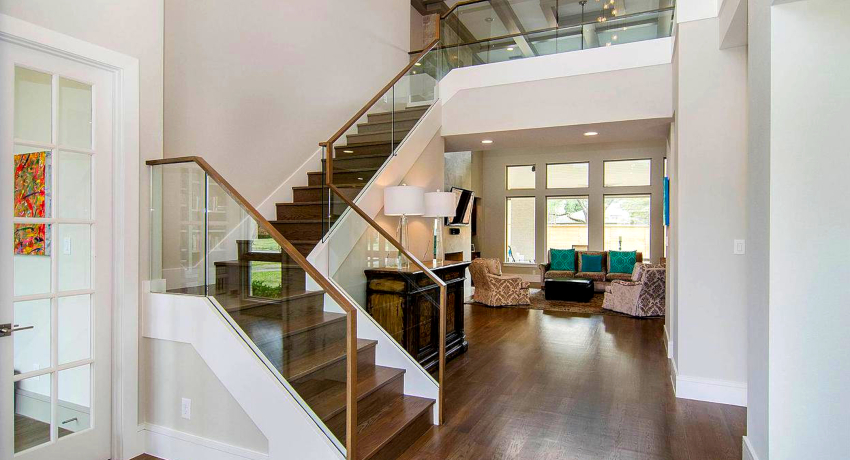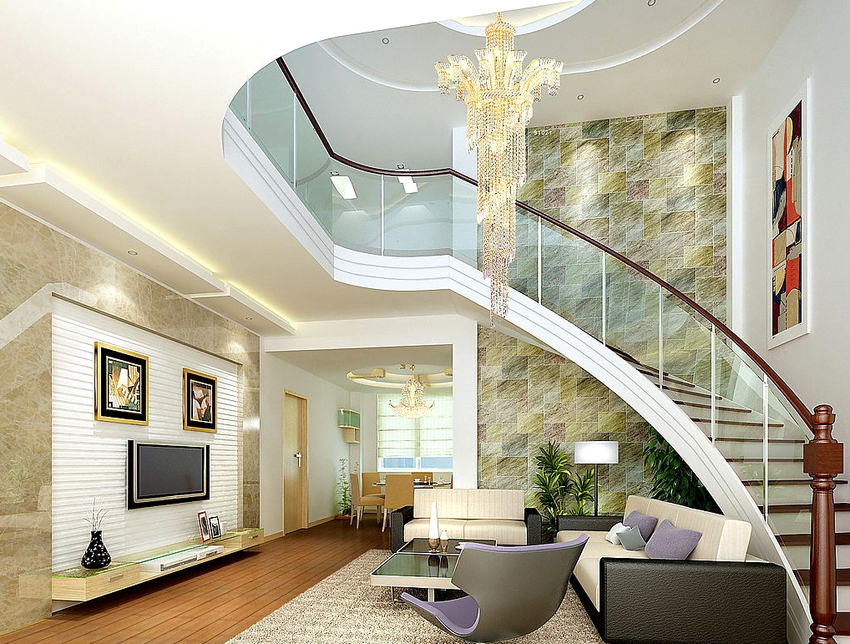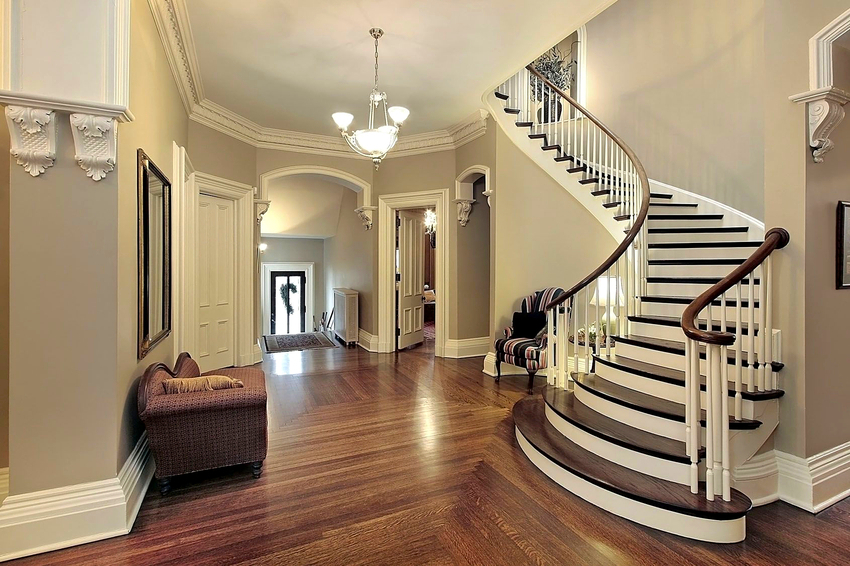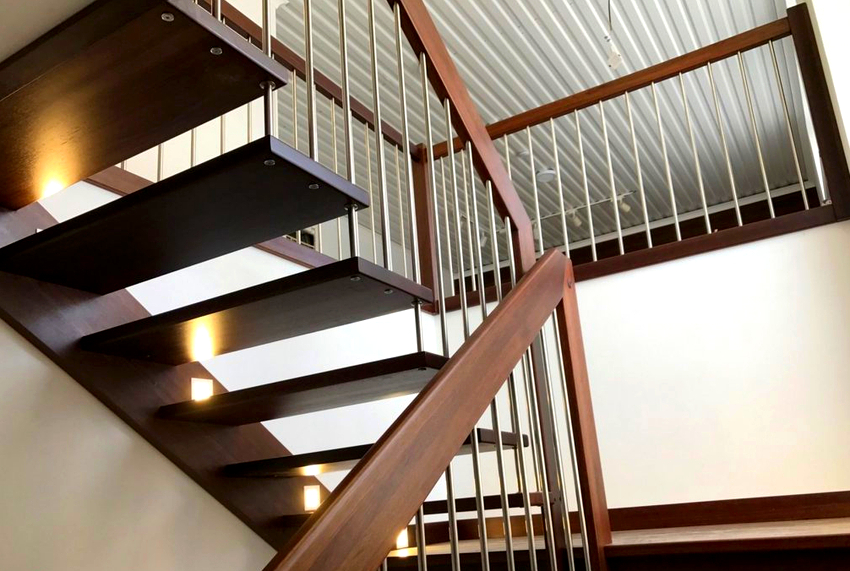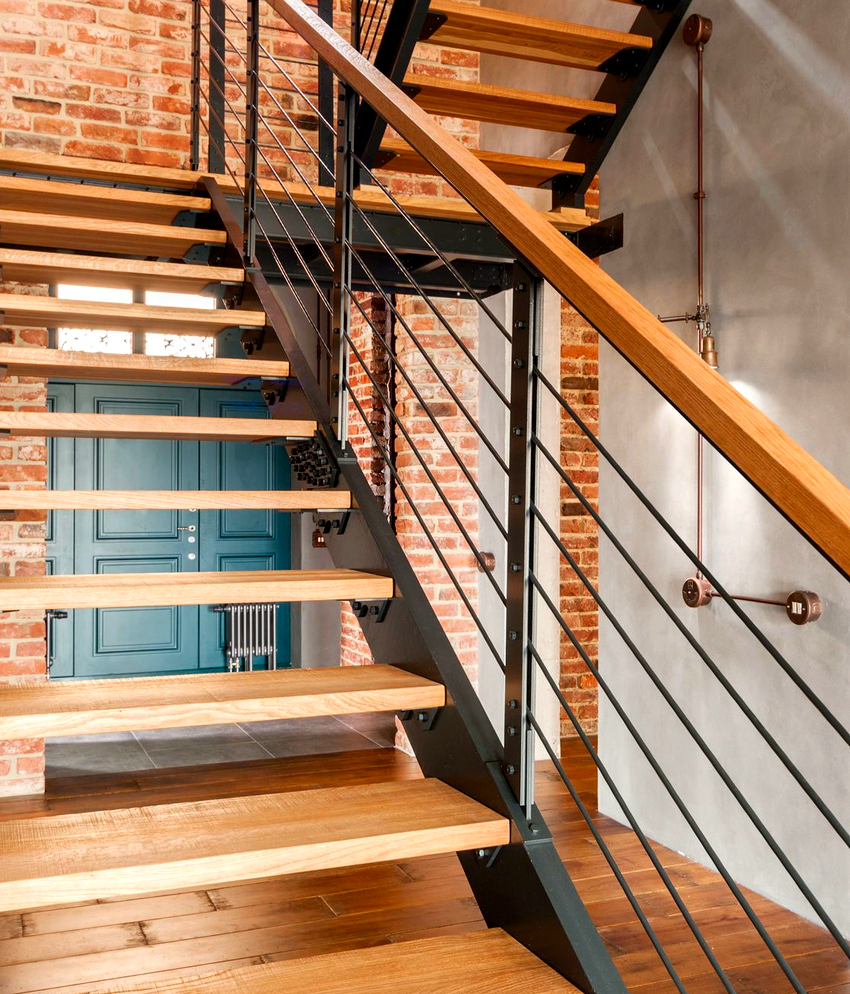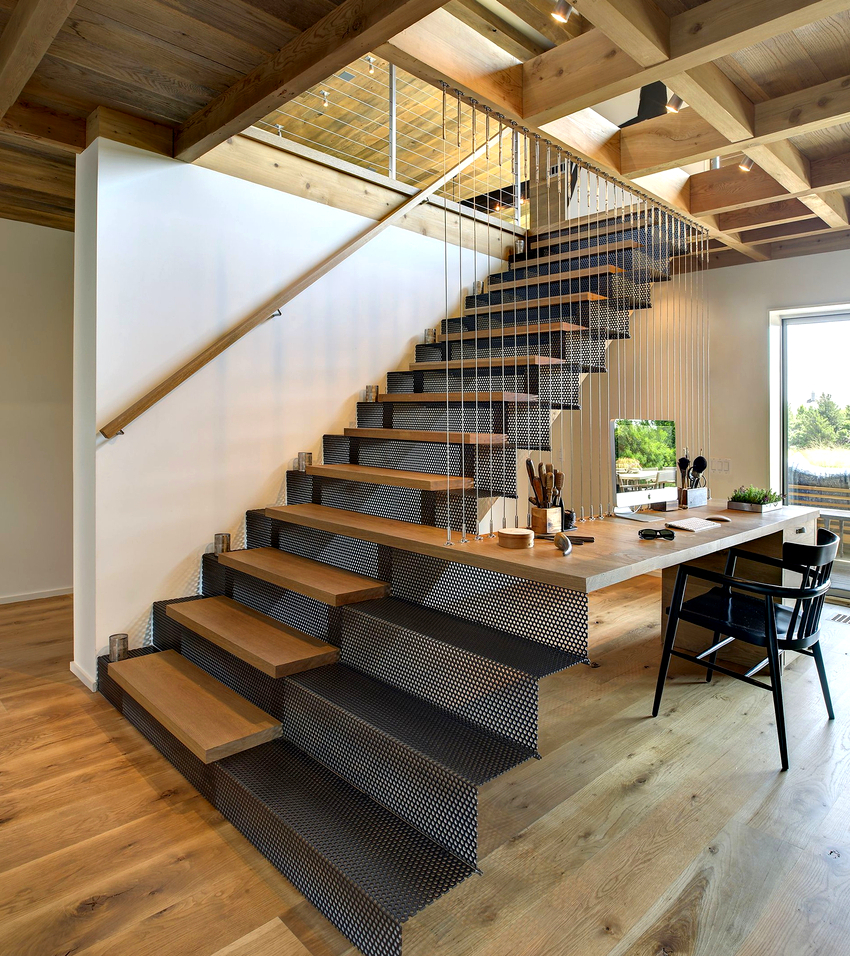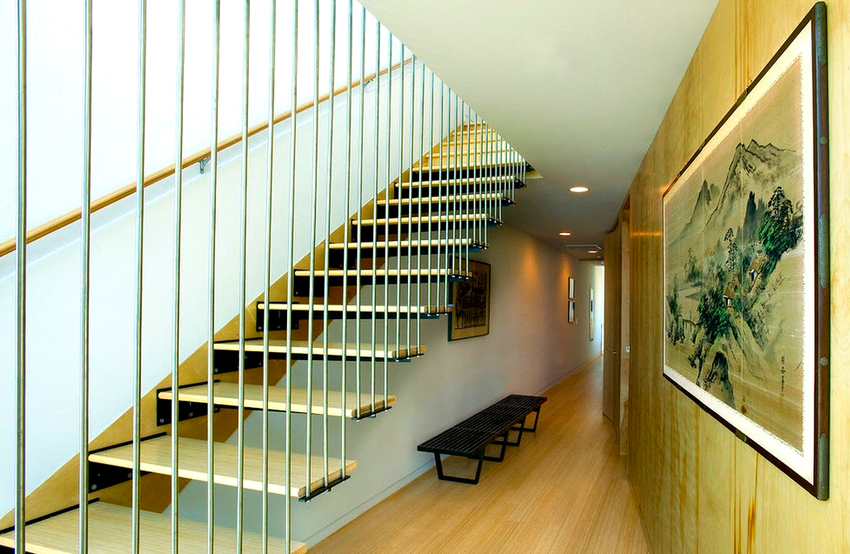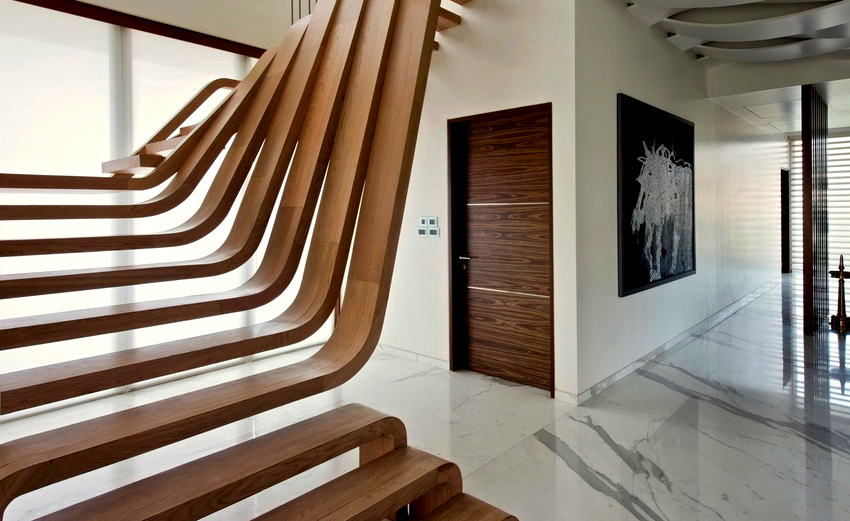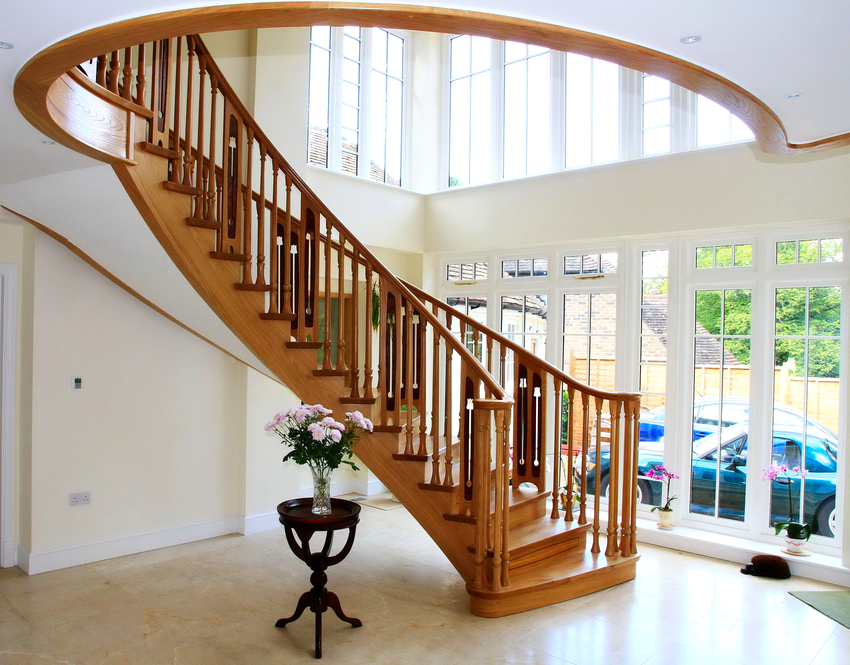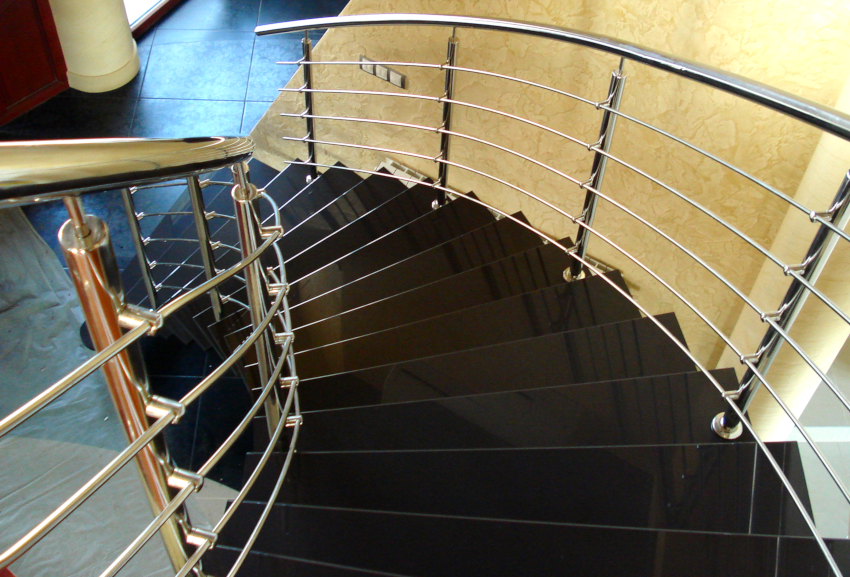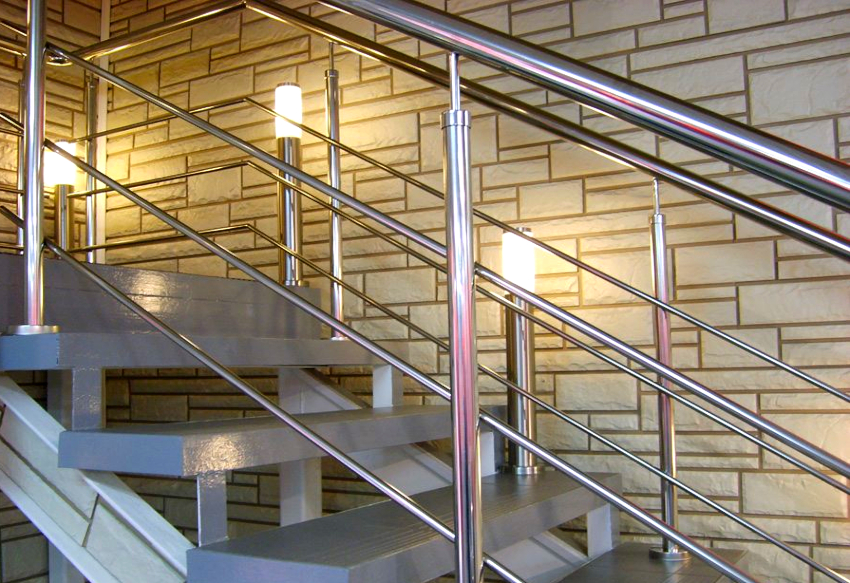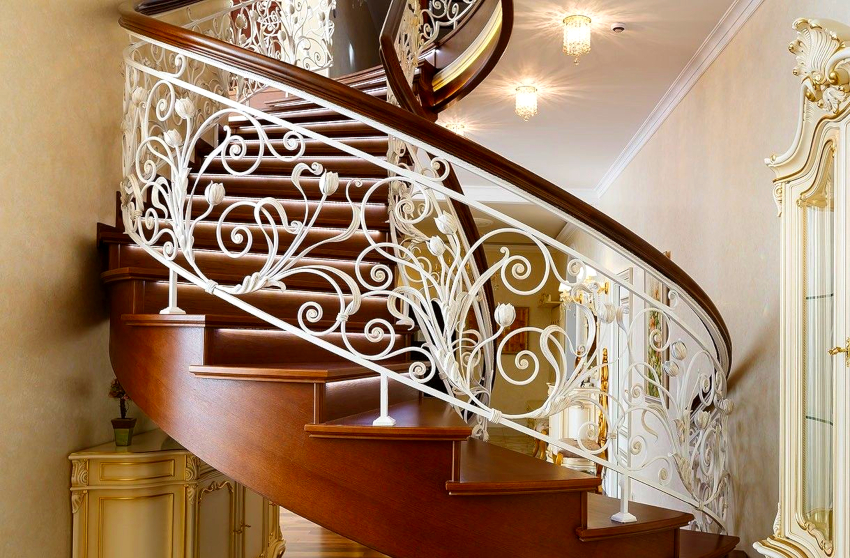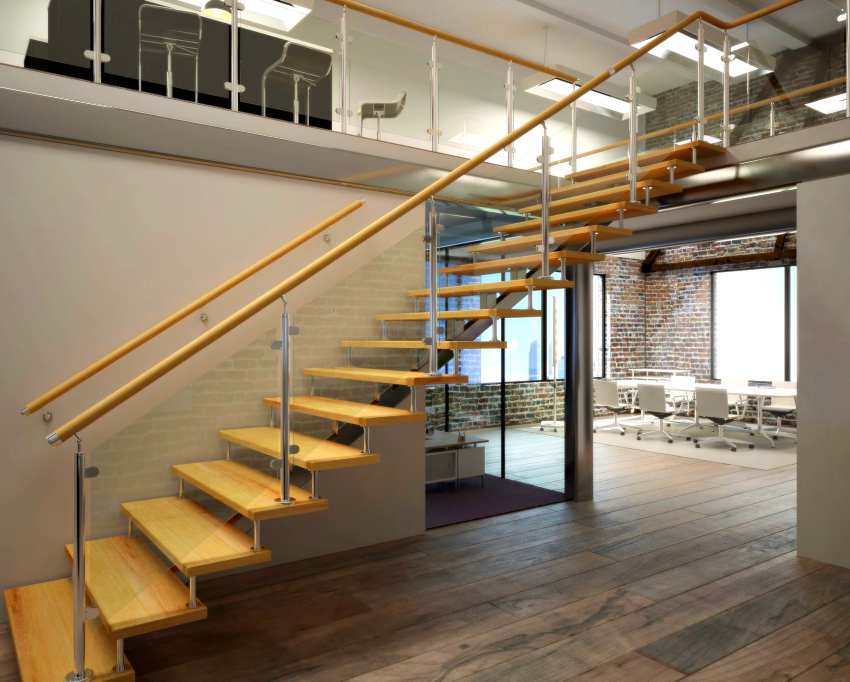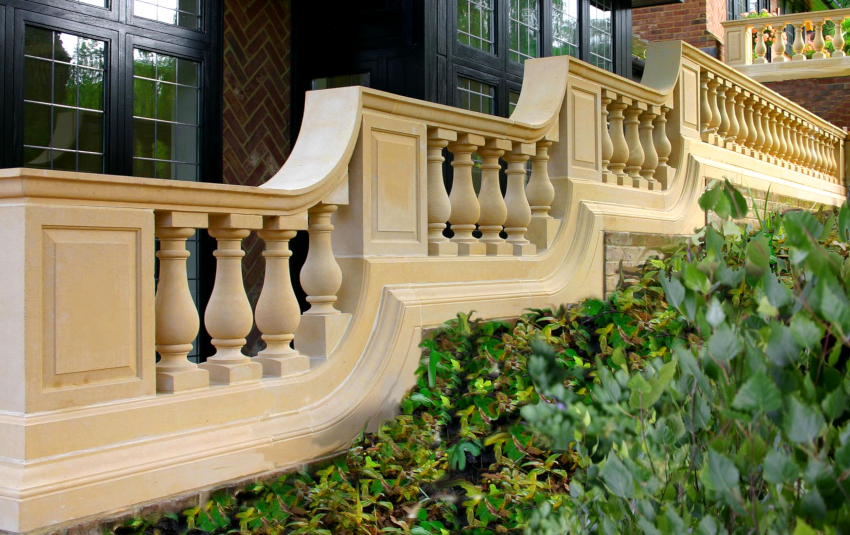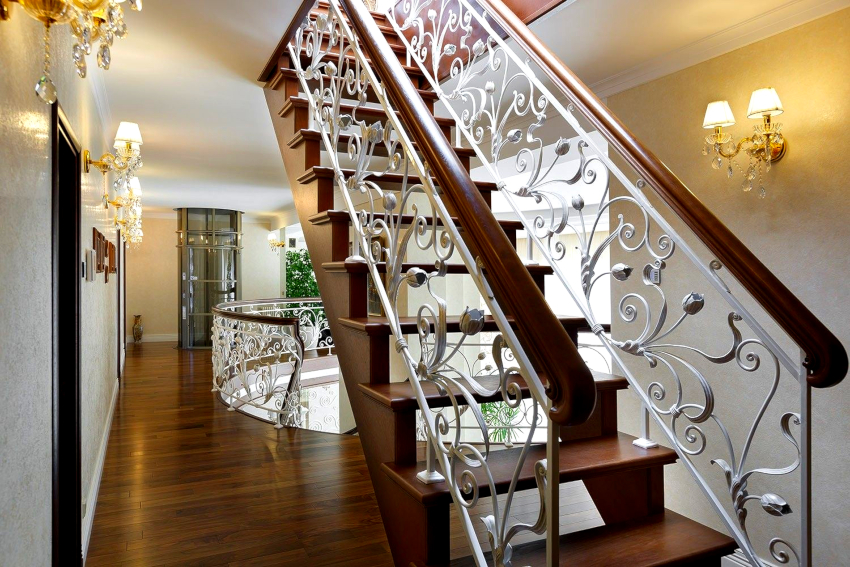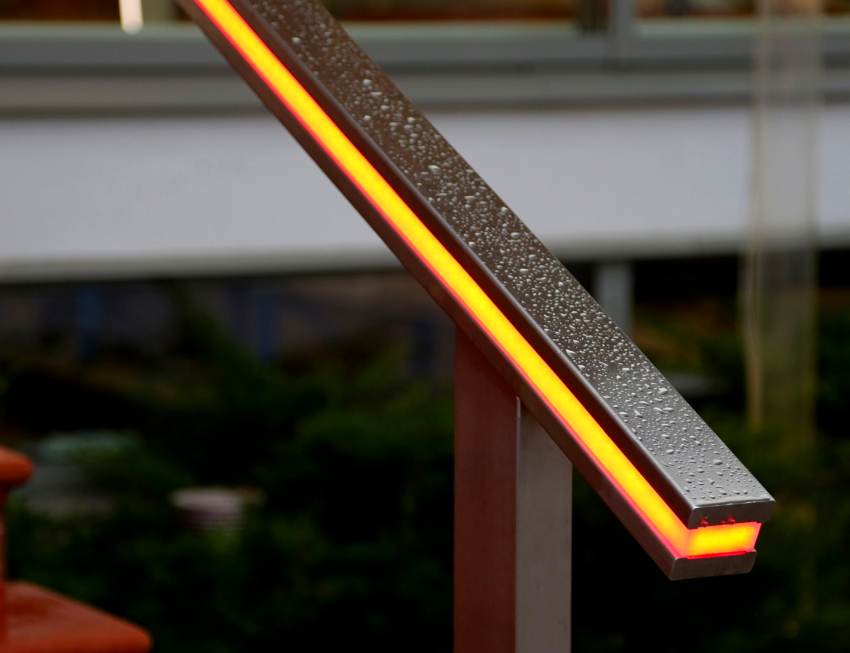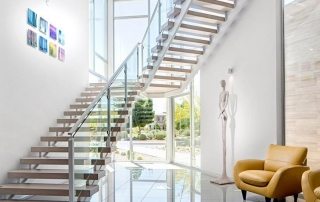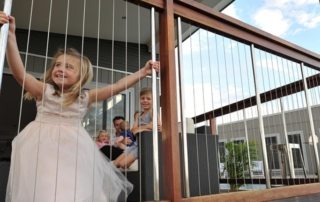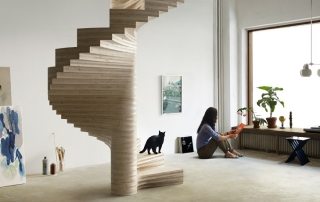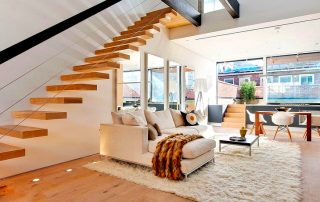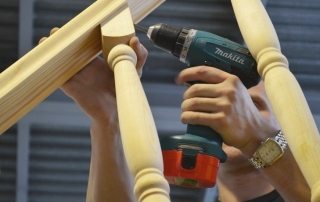First of all, a staircase rail is designed to ensure safe movement. In addition to stairs, they are necessary for other potentially dangerous structures: balconies, terraces, verandas. Most often, wood, metal, and durable glass are used for manufacturing. To make the staircase look harmonious, its constituent elements are performed in the same style. At the same time, one should not forget to "adjust" the structure to the surrounding interior.
Content
- 1 Types of stairs: basic requirements for the organization of the structure
- 2 What is a railing: the feasibility of installing them
- 3 Basic norms and standards: what should be the width and height of the railing on the stairs
- 4 Railing for stairs: types of structures, materials for manufacturing
- 5 Why do we need the upper support elements of the handrail: railings, made in various versions
Types of stairs: basic requirements for the organization of the structure
The type of stairs in a private house or a two-story apartment should be thought out even at the stage of construction or repair. When arranging a space, you need to understand that a staircase is a massive structure that occupies a prominent place in the room. For this reason, it is important not only to take into account safety aspects, but also to choose the optimal design, shape and material of manufacture so that the product becomes a continuation of the surrounding interior. There are these types of stairs in the house:
- straight;
- swivel;
- screw;
- curvilinear;
- combined;
- curved;
- marching.
Air staircases can be distinguished into a separate group, which are steps mounted with one edge into the wall. This option looks laconic and will be an excellent addition to the high-tech interior or other modern direction. As for design issues, when choosing a design, one should rely on the following basic recommendations:
- If the staircase is large and is located at a steep slope, every 8-12 steps should be equipped with small platforms so that when you climb it was possible to rest and catch your breath.
- The optimal step width is 80 cm.It is this distance that is enough for 2 people to safely pass each other on the stairs.
- For an average height, a comfortable step for climbing is considered to be 15-20 cm. The parameter should be selected, focusing on the average height of the residents of the room.
- The minimum step depth should not be less than 25-30 cm.
- When creating a staircase, you need to take into account that it must be wider than the flight of the staircase.
- You should not design a staircase with a slope greater than 45 degrees, because otherwise the product will not be considered safe. The optimal indicator is considered to be an angle of 25-35 degrees.
- The material for the construction of the stairs should not be flammable. Even if wood is used for manufacturing, it must be treated with special fire retardants.
Expert advice! The lifting angle of the stairs and handrails directly depends on the area allocated for the installation of the structure. If space is very limited, it is better to give preference to a spiral staircase. Numerous twists and turns will help smooth out large inclines.
What is a railing: the feasibility of installing them
Railings are an essential element of any staircase. In addition to the fact that the products increase the comfort of using the entire structure, they provide additional safety and make the ladder more durable and stable. It is thanks to the fences that you can give the stairs an original and complete look.
It is a mistake to think that handrails are needed only for the elderly, children, or those who have problems with the musculoskeletal system: it is generally accepted that these particular categories of people have difficulties with stability and safe movement along the steps.
Most designers claim that even a healthy adult prefers to use stairs with handrails and railings because they create a sense of security. In the event of a fall or other unforeseen situation, a person will grab onto the fences.
In addition to the fact that stairs with railings are more convenient to use, the elements also perform an aesthetic function, because they can be given an attractive look. Fences are made in any color, decorated with carvings or forged elements, angular or rounded details are thought out depending on the interior.
A variety of materials will help to give an individual appearance to fences, it can be wood, plastic, metal or glass. The railing can be attached to the steps or mounted into the wall - everything will depend on the imagination, the characteristics of the installation site and the chosen interior design.
What other elements does the fence on the stairs consist of?
So, in addition to the railings, which provide convenient descents and ascents on the stairs, the elements of the fences include:
- handrails;
- balusters.
The handrail is essentially the part of the handrail that sits on top of the railing. It is the handrails that the person holds when using the stairs. It is interesting that if you lean on the handrails during a long climb, you can remove up to 20% of the load from your legs. These elements of fences are fixed on the balusters, they can be located on one or both sides.
Useful advice! It is recommended to mount handrails on both sides if the width of the stairs exceeds 125 cm. When the structure is installed along the wall, you can attach the handrails directly to the wall surface.
Balusters are support posts, using which they attach the fence to the surface of the step. In addition to performing a decorative function, balusters increase the bearing capacity of the stairs.Placeholders are mounted between them. According to the version, the racks are divided into the following types:
- Classic. They are the most common option, consisting of vertically installed or inclined curly rods.
- Solid. If you turn to the photo of balusters for stairs, you can pay attention to the fact that it is this option that is considered the safest for houses where children live and there are pets. It will not work to crawl between adjacent elements, because they are installed close to each other.
- Crossbar. A simple construction, representing the intersection of vertical and horizontal strips.
- Patterned. Everything here will depend on the imagination of the performer, because it is appropriate to give the filling any art form. A baluster fence made using various monograms looks beautiful in a classic interior.
To create unique products of its kind, it is permissible to use a combined design of fences. Sometimes the installation of balusters on the stairs is replaced with a bowstring, which is a horizontal fence fixed under the handrails parallel to the staircase. Some railings can also have a plug, the so-called curbstone, which is installed at the beginning and end of the span instead of balusters. The plug is a purely decorative piece that does not carry any functional load.
It is interesting! On the trading floors, you can find ready-made prefabricated or one-piece railings. If it is decided to make products according to an individual order, you need to be prepared for waste, both monetary and temporary. But an exclusive staircase made in a single copy will always be the pride of the owners.
Basic norms and standards: what should be the width and height of the railing on the stairs
Correctly selected staircase railings will ensure the safest movement along the steps, thereby reducing the risk of injury. Sometimes you can find a design option for stairs without railings. They look very unusual, but many note that using them is rather inconvenient. You should know that certain standards have been developed that regulate the dimensions of the elements. As for the height of the stair railings, it is recommended to select the best option depending on the average height of the inhabitants of the dwelling.
Most experts will recommend an experiment when designing handrails. To do this, you need to stand comfortably on a step and stretch your hand forward, and then measure the distance from the palm to the step. It is the value obtained that will be the optimal height of the handrail. Traditionally, the minimum height is 90 cm, the maximum handrail is raised by 110-115 cm.
If small children live in the house, you should not attach an additional stationary handrail, because it will not even take a year for the child to grow up. It is better to install a temporary element that will run parallel to the main one. Other parameters of fences:
- The width of the ladder handrail usually varies from 3 to 7 cm. It is important to choose a diameter that fits comfortably in the hand.
- The distance between individual balusters can be any, because in this case everything depends on the artistic design of the owners of the building. Usually the indicator is in the range from 50 to 70 cm.
Other standards to be met by handrails and railings in buildings
In accordance with the standards of GOST, as well as according to the state SNiP, it is recommended to adhere to the following parameters:
- ladder fence height - 90-100 cm;
- the distance between adjacent racks is 60 cm;
- the obligatory presence of filling between the balusters;
- the gap between the wall surface and the handrail is 7-10 cm;
- the distance beyond which the rounded end of the railing should protrude relative to the last step is 30 cm.
Separate norms are also allocated for the load for which the fences for stairs in a private house and public buildings must be designed. All data were obtained on the basis of tests carried out in accordance with SNiPu 2.01.07-85. Thus, when creating structures, it is recommended to rely on the following load parameters:
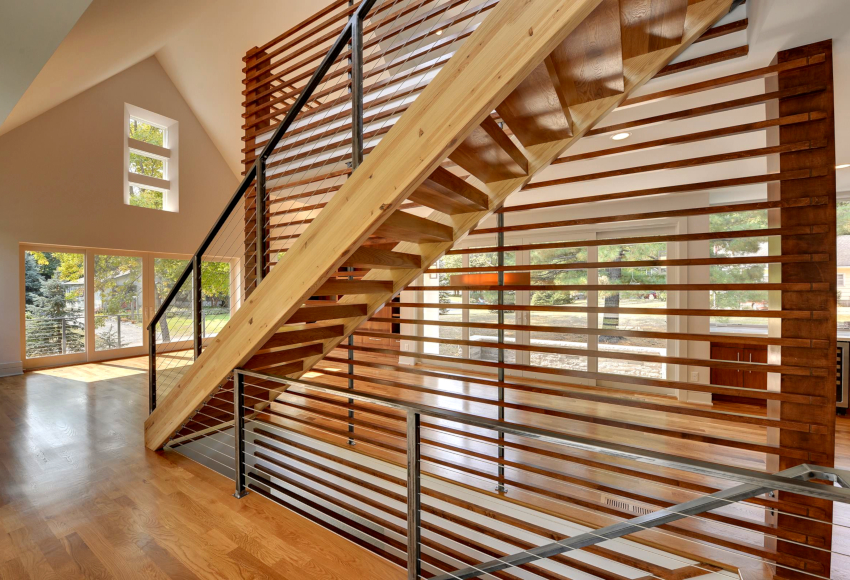
Depending on the purpose of the institution, fences must withstand a load in the range of 30-150 kg / m²
- social institutions: children's institutions, hospitals and sanatoriums - more than 80 kg per square meter of the fence;
- office buildings - 30-80 kg / m²;
- housing stock buildings - 80-100 kg / m²;
- premises for sporting events, stadium stands - more than 150 kg / m².
Other mandatory safety requirements (according to SNiP):
- it is mandatory to install handrails if the staircase consists of more than three steps;
- there should be no sharp corners or protrusions on the fence;
- it is necessary that the balustrade completely surrounds all flights of stairs.
Separate recommendations are also highlighted regarding handrails and railings for stairs in child care facilities (according to the standards of the 1.256-1 series):
- an additional handrail should be installed at a height of 50 cm from the floor;
- for greater convenience, it is recommended to use swivel railing brackets when installing, allowing you to change the angle of inclination;
- it is strictly forbidden to use glass filling between the balusters;
- the gap between the posts and balusters - no more than 10 cm;
- barrier height - 1.2-1.8 m.
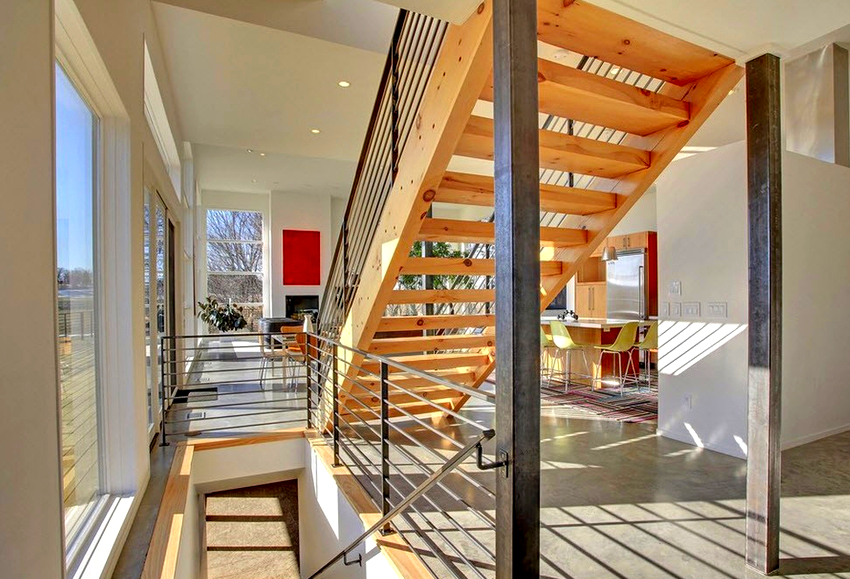
According to SNiP, it is necessary to install railing if the staircase consists of more than three steps
Useful advice! If the house is inhabited by people using wheelchairs for movement, a ramp is installed instead of a staircase, and the railing must be made out on both sides.
Before starting the design of stairs, you should familiarize yourself with the recommendations regarding the arrangement of structural parts of the railing, which are given by experts in this field:
- The number of balusters is determined by the number and dimensions of the handrails. If the base is made of flexible and heavy materials, then the number of supports should be such as to prevent profile sagging or excessive overloading of the supports.
- According to the standard, balusters are installed at each step, but if they are wide, it is possible to mount several supports on one surface. When children live in the house, the distance between the balusters should be such that the baby cannot stick his head between them.
- With a march width of more than 1 meter, the staircase is equipped with handrails on both sides.
- Wooden railings for stairs may only be installed in residential private houses.
- In office buildings, it is better to mount a bowstring instead of balusters.
- When arranging the space of a shopping and entertainment complex, it is imperative to use at least three crossbars for railings.
Related article:
Wooden stair railings: when natural beauty brings comfort
The subtleties of creating a railing. Construction tips. Instructions for the manufacture of individual parts. Installation types.
Railing for stairs: types of structures, materials for manufacturing
As the previous information shows, there are a large number of ways to equip handrails to decorate stairs. The choice of a particular option will depend on the location and structural features of the staircase. In general, the following types of fences for stairs in the house are distinguished:
- Interior. As the name implies, such structures are located indoors. In most cases, interior staircases are made of glass or wood, and the shade is selected depending on the surrounding interior.
- Exterior. This includes outdoor stair railings that frame your veranda, porch or balcony. It is necessary that the material is well tolerated in various weather conditions. Outside living quarters, metal and concrete are used for fencing.
The most popular materials used to make fences include:
- Metal. Basically, for the production of handrails, aluminum is used, which has an impeccable shine, or forged steel, which has unique decorative properties. Forged products are more often custom-made.
- Wood. The most popular material for creating a staircase fence in a private house, because the wood is warm to the touch and fits into most interiors.
- Polymers. The main material here is plastic, mounted with special fasteners. The main advantage of such products is their low cost.
- Glass. Glass stair railings are mainly used to organize space in shopping or office centers. Only tempered glass is suitable for creating structures.
- Concrete. It is found mainly in the design of the entrance to the building or on the main stairs. In this case, you can purchase ready-made structures in production or cast yourself directly on the construction site. For work, you only need special forms.
Fences made by combining materials stand out. The most common option is to combine wrought iron or aluminum balusters with wooden elements.
As for the shape of the railing, in this case, everything will depend not only on the location of the structure, but also on the material used to create the railing:
- Classic designs are made of wood. Most often, balusters are straight massive columns with rounded edges, often decorated with carvings.
- Metal stair railings are usually not so massive, but the products are abundantly decorated with decorative elements.
- Glass is not a very malleable material (unlike wood and metal), so this type of fencing will have a strict and laconic design.
Features of using wooden stair rails
Despite the fact that the building materials market does not stand still and is constantly replenished with new products, the tree does not lose its relevance, therefore, such railings continue to be actively purchased. This is due to the fact that this material is of natural origin, it is not capable of harming the health of others.
The main advantages of wooden fences:
- attractive appearance;
- pleasant structure and texture;
- the ability to resist mechanical damage;
- resistance to negative environmental influences.
It should be noted that all these advantages can be increased if wooden structures are periodically treated with special solutions. Pretreated wood can be used not only indoors, but also outdoors.
It is quite easy to choose a suitable option for work, because products from various types of wood, differing in design, color and quality, are presented on trading floors. But fences made from different types of wood will differ in cost. Pine products are considered the cheapest. Oak structures are elite and durable, therefore they are characterized by a high price.
Wooden balusters are used more often than others for decorating interior stairs in houses. They are attached to both steps and wooden handrails. Depending on the type of staircase, balusters differ in appearance and size.The size of the standard section is 45x45 mm: the wider the ladder, the greater this figure. Sometimes there are balusters, the section of which is more than 50x50 or 60x60 mm.
A significant disadvantage of wooden staircase fences is that the material, due to its natural origin, is subject to swelling and drying, especially if the ambient air parameters are constantly changing. This can reduce the strength of the railings, and exterior stairs can deform and change color.
Why stainless steel and aluminum stair railings are popular
Stair rails made of stainless steel or aluminum are widespread in the organization of the exterior and interior. Nickel-plated or brass options, which were very popular at the end of the last century, are installed slightly less often. It was then that brass and nickel fences were used to equip office and shopping centers.
It is interesting! Metal railings have long been widely used due to their high consumer characteristics and versatility, which makes it possible to use such structures with equal success both in the house and on the street.
Among the main advantages of metal railings for stairs are:
- Long service life. Metal handrails and railings, with proper care, can last up to 50 years.
- Attractive appearance. A metallic sheen can brighten any modern and even classic interior.
- Easy maintenance. The products do not require constant maintenance, which consists in tinting or varnishing the elements. There is no need to apply antifungal or fire-fighting solutions as is the case with wood. The only thing to do is wipe the fences with a damp cloth from time to time.
- Resistance to destruction. Steel and aluminum, like other metals, are resistant to the appearance and development of rust, it is this fact that allows such structures to be installed everywhere.
- Cost. Stainless steel stair rails will cost significantly less than glass or forged products, but they are more expensive than wooden ones.
In addition to a large number of advantages, fences have some disadvantages. So, many users note that with the active operation of the structure, the material's ability to withstand mechanical damage decreases. The surface is covered with small scratches and chips, which are felt to the touch, and the joints are loosened.
Advantages and disadvantages of forged stair handrails
Wrought iron stair railings are considered an expensive but high quality option. At the same time, the finished designs are distinguished by exceptional beauty and sophistication. Several forging technologies are used to make railings:
- Cold. The result of the work is simple shapes - twisted rods. As a rule, there are such options for railing on a veranda or other outdoor structures.
- Hot. It requires significant labor and time costs, but the result is a railing of unusual and ornate shapes. It is hot forging that allows you to create the most complex designs, but you need to be prepared for high financial costs.
The main advantages of forged stair railings:
- Resistance to aggressive environmental influences. Fences without loss of appearance tolerate the effects of precipitation, fluctuations in temperature and humidity. In addition, they are not subject to mechanical damage.
- Long term of use. Forged products in most cases will look beautiful and attractive even after 100 years.
- Unique design. Forging is mainly used to fulfill individual orders. Thus, it is possible to decorate the stairs with exclusive fences.
The only drawback of forged railings is the high cost, because the entire manufacturing process is an exclusive handicraft.
Features of plastic and glass stair rails
Glass stair rails are an excellent solution for modern interiors in hi-tech, minimalism, fusion and other styles. Due to the fact that only hardened (tempered) glass is suitable for creating railings, products are endowed with a large number of advantages:
- Ease and high speed of installation. You can install the fences yourself, without using any complex tools. By and large, the entire installation process will take no more than a few hours.
- Large assortment. On the trading floors, a variety of material options are presented, which are characterized by additional advantages, such as sound insulation, frost resistance. The more expensive glass stair rails are explosion and heat resistant.
- Durability. Using glass structures will take as long as metal ones - about 50 years.
The advantages include the ability to quickly dismantle. If any of the sections is deformed or loses its integrity, it will not be necessary to disassemble the entire structure, because all sections are located autonomously.
Among the disadvantages of glass railings for stairs for a country house, it is worth noting the need for constant maintenance. If the glass is not regularly wiped, then stains, fingerprints and other dirt will be present on the surface, spoiling the appearance of the entire structure. Another conditional disadvantage is the high cost of finished products.
For the production of composite handrails, hard plastic is used, mounted on a special clamp. The main advantage of polymer fences is low cost, because cheap plastic is used for the manufacture of products. It is important to understand that the advantages of plastic fences do not end there. Other advantages are:
- easy care, because plastic is easy to get rid of stains and polish;
- no need for regular processing with paint or varnish.
At the same time, a significant disadvantage of plastic fences is considered to be the low resistance of the material to mechanical stress and shock. With strong pressure or impact, the integrity of the structure is likely to occur.
Stone and concrete railings for the terrace and other outdoor structures
Fences made of stone or concrete are mainly suitable for the decoration of outdoor structures: external flights of stairs, porch or veranda. The material is distinguished by increased ability to withstand external influences, has a significant weight, and is cold to the touch. It is for these reasons that concrete barriers are not used inside houses.
Concrete is able to easily endure negative atmospheric influences, it looks monumental and presentable outwardly. With its help, it will be possible to highlight the exterior of the house and emphasize the high status of the owners. Depending on the specifics of production, there are these types of stone balusters:
- Carved. As a rule, they are made by hand, which allows to give the elements exquisite and varied shapes.
- Point. A common variant of fencing, which has a rounded shape.A distinctive feature is the presence of point supports, the horizontal section of which is circular.
- Hewn. The balusters are distinguished by smooth edges and angular shapes, the horizontal section of the posts resembles polygons.
As for the materials, other stones are also suitable for organizing the railing:
- marble;
- Dagestan stone;
- granite.
All these options are quite heavy, so often a lighter and easier-to-work artificial stone is used as a base. But the most durable fence is obtained only as a result of the use of granite, since this particular stone is one of the hardest rocks.
Important! Stone handrails and railings look attractive and expensive. But it should be borne in mind that structures have a significant impact on stair flights, which must be taken into account when creating stair projects.
It is recommended to combine stone fences with plank or metal stairs. Such a combination will play up the design and give the room a cozy and comfortable look.
Why do we need the upper support elements of the handrail: railings, made in various versions
To make the railings comfortable and safe to use, they must be equipped with handrails, which are performed in different shapes and using different materials.
As for the shape, handrails are:
- round and oval;
- rectangular and square;
- corner;
- rounded.
The material is selected depending on the purpose, use and location of the stairs. If we talk about the porch, here you can most often find forged, chrome, aluminum and other metal stair rails.
PVC-based handrails can easily simulate any surface, but they are not as resistant to external influences. The main advantage is the high plasticity of the material, which allows you to give the elements any, even the most unusual shape. To do this, you will need a building hair dryer or other device that blows warm air. PVC handrails are also characterized by a low price.
For many years, wood has been the most popular material for the manufacture of handrails due to the special comfort that wooden elements provide. Some decorate wooden railings for stairs with their own hands, using artistic cutting, a technique for aging surfaces, and applying special solutions.
Railings are also classified according to the method of attachment. Some people mount the elements above the bowstring, but sometimes the handrails perform a supporting function. The handrails are attached to the balusters in various ways: using anchors or self-tapping screws, by welding. For mounting on a wall or along a staircase, special cast brackets are used, which allow you to grip the bar from either side, including the end.
If you want to emphasize the individuality and uniqueness of the interior, they resort to creating handrails of unconventional shapes from scrap materials:
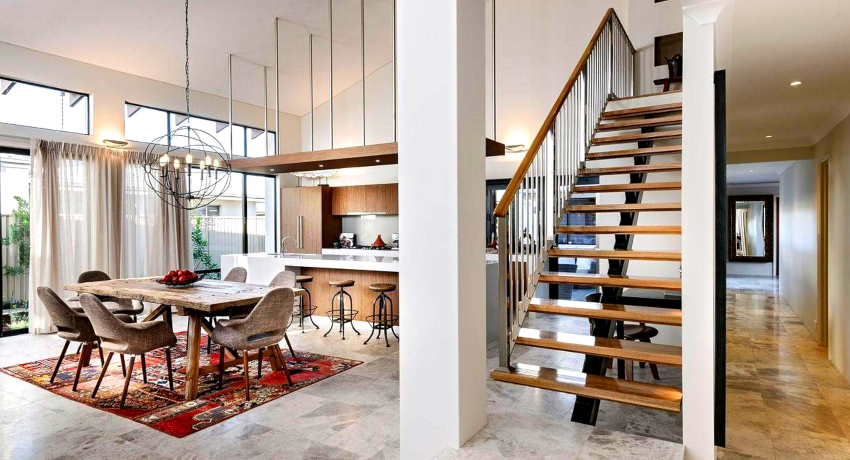
The material for the handrails is selected depending on the purpose, location and features of using the stairs
- Rough handrails made of untreated timber will perfectly fit into the interior of the chalet. This option will help place accents in the room and emphasize the unusualness of the interior.
- In a modern loft or minimalism style, a railing made of branches in combination with PVC looks appropriate.
- A nautical or rustic style is well emphasized by a rope or thick rope. Moreover, this option is permissible to perform in the country or in a private house.
Other popular handrail and handrail designs
Each owner wants to make his home unique and personalize it. Among the original design ideas, the following options stand out:
- continuous light wood handrails;
- smooth oak beams installed with metal brackets;
- railings made by a combination of glass and chrome elements, in a wooden frame;
- steel railings, parallel to each other, diluted with curved sections and turns;
- metal and wooden fences, which are created using a uniform alternation of vertical and horizontal lines.
Checked! Backlit handrails look very unusual, especially if they are located against the background of dark walls. It is important to ensure that the wires are properly insulated so that they do not cause electric shock.
If you choose the option of a backlit fence, you should pay attention to the following designs:
- Illuminated glass railings. In this case, the diode tape is built into the main profile: for this purpose, it is recommended to choose diodes with a power of no more than 5 W / m. The glow color is selected based on the features of the interior design.
- Tubular mount. For the arrangement, you will need external clamps, where the backlight is attached. At the end, a rivet is installed for reliability.
- Wall mounted. The railings and lighting fittings are installed using mirrored stainless steel grooved pipes.
A railing is an important element of any staircase, which makes the use of the structure more comfortable and safe. It is thanks to the various design options that it will be possible to decorate the interior or exterior of the house. To make it convenient to use handrails and railings, it is important to choose the right not only shape, but also the material for their manufacture.

